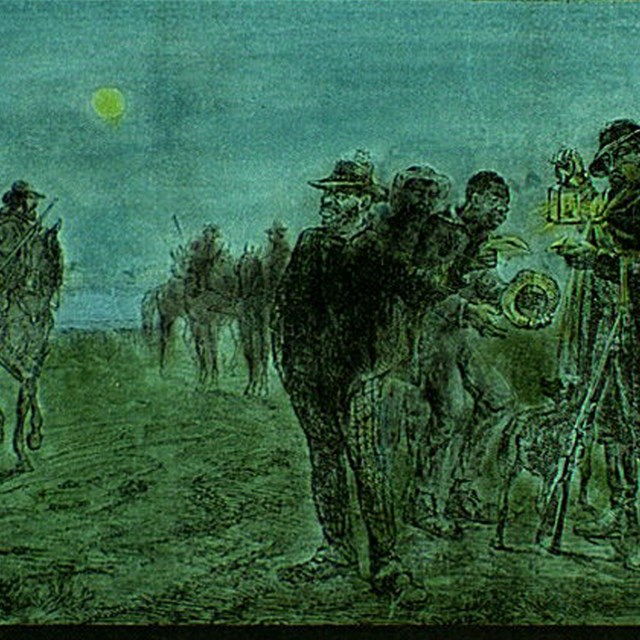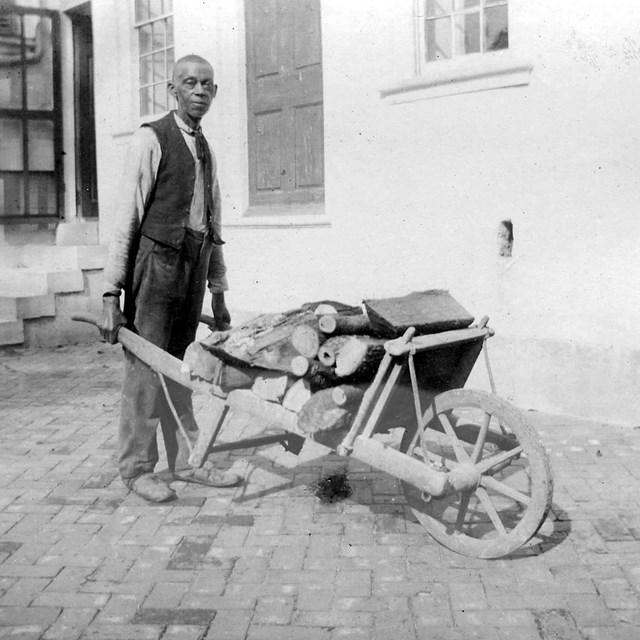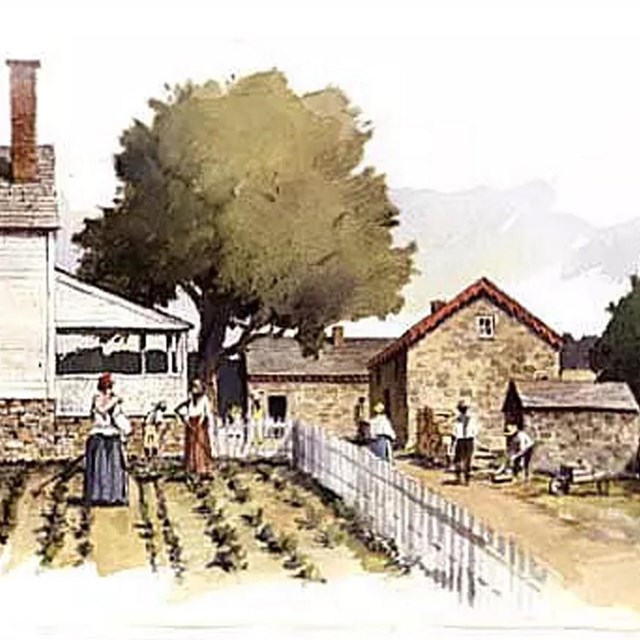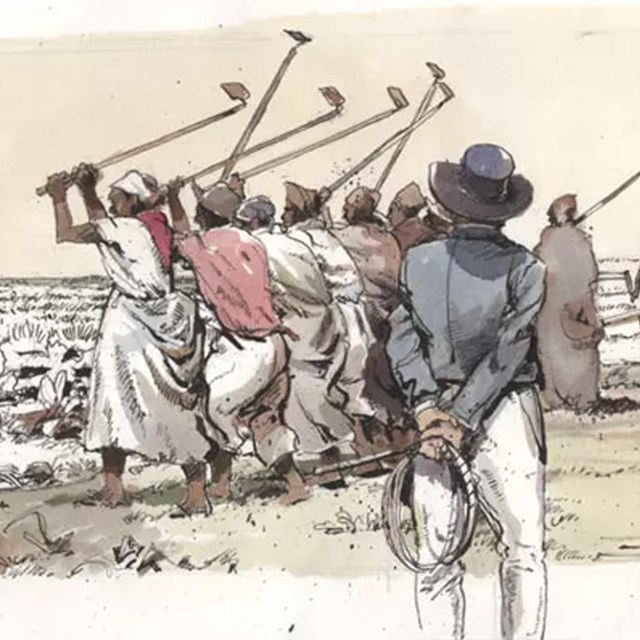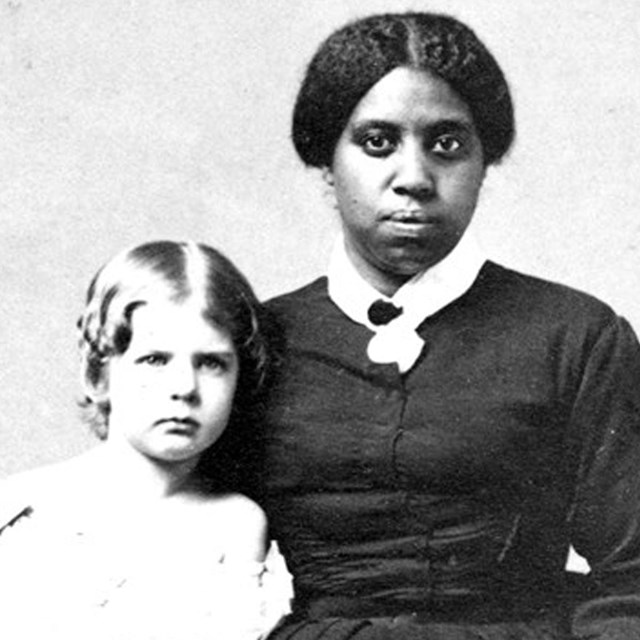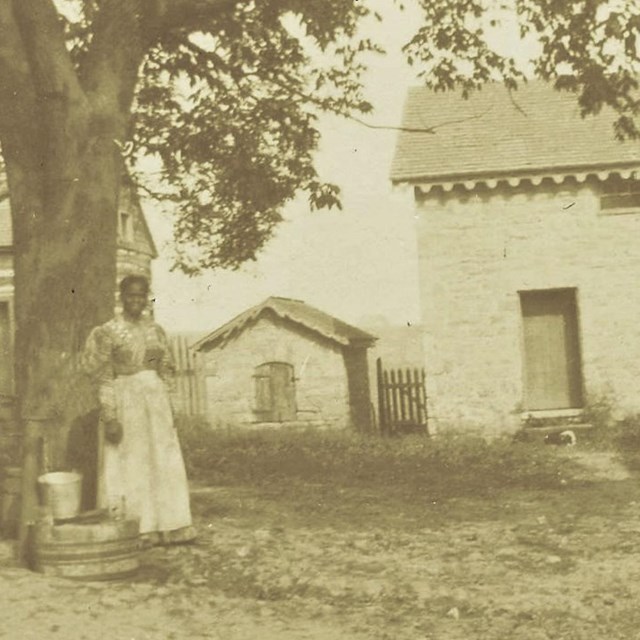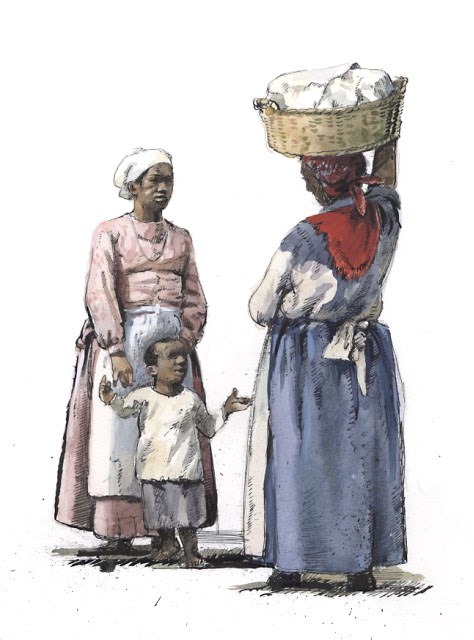
NPS During most of John Ridgely’s tenure as the head at Hampton, Lucy Jackson worked as the head housekeeper. Dr. Kent Lancaster notes that documents “suggest a person of unusual forcefulness for one in her status.” Enslaved by John Ridgely while pregnant, Lucy gave birth to her son Henry in the month after her purchase in 1838. She had another son, George, in 1842 and a source from 1866 states that Lucy’s husband was free. As the housekeeper, she would have overseen the other female house workers: chambermaids, childcare workers, dressers, and clothing makers. Though most enslaved house servants did not sleep in the mansion, it is possible that Lucy slept over the butler’s pantry in the east hyphen, designated as the housekeeper’s bedroom on an 1875 floor plan. Lucy’s son Henry took the bold step, along with three other young, enslaved men at Hampton (Bill Matthews, Charles Buckingham, and Josh Horner) to seek his freedom immediately after the beginning of the Civil War. All the young men apparently successfully seeked their freedom. Lucy soon followed suit, successfully seeking her own freedom from Hampton before 1863. After emancipation, it appears that Lucy was residing in Washington, DC. She is last heard from in the Ridgely records in 1866, when in April of that year John Ridgely received a letter from her attorney, William Boyd, demanding the return of Lucy’s personal property, all of which had “been bought for her by her free Husband.” These items include “6 common dresses, 9 good dresses, 4 silk dresses, furrs and Muff... and other articles of great value.” It is not known whether Lucy recovered any of her property, though John Ridgely responded that other servants at Hampton had already dispersed all of her effects. Learn More!
|
Last updated: May 19, 2025

